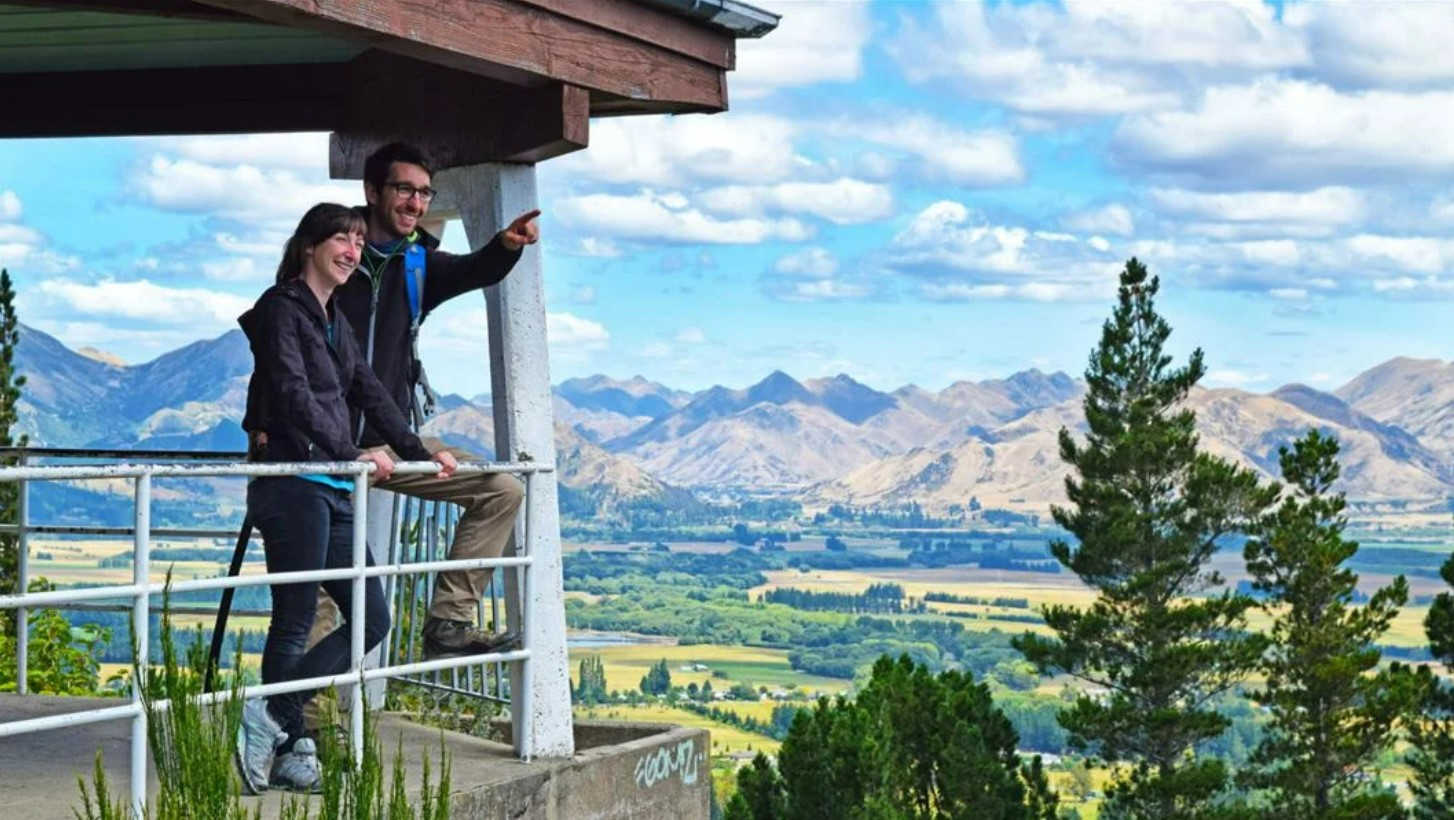- info@nzjane.com
- Auckland, New Zealand
 View over Hanmer @DOC / BackpackersGuide.NZ
View over Hanmer @DOC / BackpackersGuide.NZ
Begin 1 km along Jollies Pass Road. The walk threads its way through some of the oldest stands in the forest with a variety of exotic conifers and broadleaf species. Understories of sycamore, oak, silver birch, and rowan provide a colourful display in autumn.
Stop 1: European larch (Larix decidua), planted 1904. One of few deciduous conifer species in the world. Widely used in early plantings, it has been replaced by the versatile fast-growing radiata pine. Uses include sawn timber, chipwood, furniture and speciality products such as wood panelling.
Stop 2: Corsican pine (Pinus nigra var. larico), planted 1904. A slow-growing tree producing good hardy timber. Uses include fence posts, power poles and chipwood.
Stop 3: European alder (Alnus glutinosa), planted 1904. Moisture-loving trees planted in swampy areas. Drains that were hand dug are still used today. Alder has little commercial value but attracts birdlife. Growing among them are fine oak specimens (Quercus spp.), often used to fill in blank spaces from former planting failures.
Stop 4: Silver birch (Betula pendula) Initially planted for their aesthetic value and to shelter the newly planted forest. The clean, white bark of these trees smells sweet because of an oil stored in special cells in the outer layers. Clusters of bright red Amanita fungi may be seen under the birches in autumn. These highly poisonous mushrooms are also known as fly agaric because of their traditional use as a poison to kill flies.
Stop 5: Austrian pine (Pinus nigra var. austriaca), planted 1904. Because of its uneven growth, this species is no longer planted; it cannot compete with the more versatile Corsican pine.
Stop 6: Along Mansfield Road. This lane typifies the early planting style, with silver birch lining the narrow road and a mixture of conifers and deciduous hardwoods on either side. A photographer’s paradise in autumn.
Stop 7: Radiata pine (Pinus radiata), planted 1907. The versatility of this fast-growing species, a native of the Monterey Peninsula in California, makes it the most important timber tree in New Zealand. Uses include sawn timber, fence posts, pulp, and panel products such as plywood and chipboard. In this stand the largest tree has a volume of 11.2 cubic metres and height of 45 metres. Although normally logged when 25–30 years old, this stand is being kept as a demonstration unit because of its condition and interest.
Stop 8: Norway spruce (Picea abies), planted 1904. Planted on a trial basis but has proved to have little commercial value in New Zealand.
Stop 9: Natural regeneration. This is an example of natural seed dispersal – yew, holly and rowan (tree seeds and berries dispersed by birds), and sycamore (plane like seeds spun to the earth by the wind) have appeared under European larch planted in 1904.
Check DOC resource for up to date information.


Your enquiry has been successfully sent. We will contact your shortly.

You will get your insider discount checklist shortly.